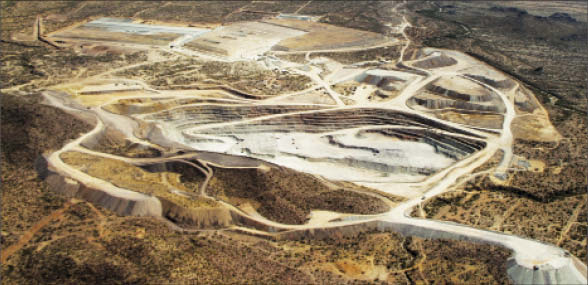AuRico Gold (AUQ-T, AUQ-N) has had nothing short of a notable year so far, as the company continues to rebrand as a low-cost producer, now with three gold-silver mines in Mexico.
Formerly known as Gammon Gold, the company recently changed its name and logo to signify a “new beginning and a new chapter.”
The new name, amalgamating the atomic symbol for gold (Au) and Spanish for rich (rico), became effective in mid-June, following a bitter showdown for producer Capital Gold and its El Chanate mine in Mexico’s Sonora state.
AuRico outmanoeuvred Timmins Gold (TMM-T), which runs the San Francisco mine nearby, and secured El Chanate as its third mine, along with the drill-ready Orion exploration property in early April.
AuRico says El Chanate almost doubled its gold reserves, and bolstered company-wide production.
The mine contributed 14,871 oz. gold and 24,912 oz. silver or 15,505 gold eq. oz. to the company’s quarterly production. AuRico produced 43,714 oz. gold and 1.2 million oz. silver, or 75,073 gold eq. oz., using a 39-to-1 realized gold to silver ratio. This represents a 53% increase in gold eq. oz. over the same period last year.
El Chanate is set to add more ounces as it undergoes a five-phase expansion to increase crushing and stacking capacity to a potential 26,000 tonnes per day.
The first phase is expected to push El Chanate’s annual production from 60,000 oz. to 76,000 oz. by year end, writes Dundee Securities’ analyst Ron Stewart in a recent note to clients. He adds that following the second phase in mid-2012, the mine’s annual production should further rise to 85,000 oz. at average cash costs of US$590 per oz.
The company will decide whether to complete the other three phases after it updates El Chanate’s reserve and mine plan.
The new mine plan will include 213 holes drilled since the previous reserve estimate and another 20,000 metres slated for the latter half of the year.
Stewart says he expects the drilling could beef up the mine’s existing 1.5-million-oz. reserve (based on 70.5 million tonnes grading 0.66 gram gold eq.) by another 300,000 to 500,000 oz.
The rest of the second-quarter production came from the company’s flagship Ocampo gold-silver mine in Chihuahua state.
Ocampo had a remarkable period, yielding 19% more gold eq. oz. than the previous three months, at lower cash costs of US$340 per gold eq. oz. As a result, AuRico lowered its 2011 cash cost estimate for Ocampo to US$400-$430 per gold eq. oz.
The mid-tier producer reported company-wide realized cash costs of US$384 per gold eq. oz., reaping a margin of US$1,125 per oz., a 65% improvement over 2010.
Revenue came at a record US$113 million, compared to the last year’s US$73 million. The miner also posted record operating and net free cash flows of US$54 million and US$21 million, respectively.
“We have delivered one of our strongest production quarters at cash costs well below industry average,” said Rene Marion, AuRico’s president and CEO, in a press release. In 2010, the average industry cash cost was US$557 per oz.
Marion added the company will start the second half of the year with more than US$102 million in hand, and three operating mines.
In July, AuRico restarted the Las Torres mill at the El Cubo gold-silver mine in Guanajuato. The mine will start operating in the third quarter.
AuRico has upped its 2011 production guidance to 175,000 to 195,000 oz. gold, 4.95 to 5.50 million oz. silver, or 265,000 to 295,000 gold eq. oz., at lower cash costs of US$445 to US$475 per gold eq. oz. using a 55-to-1 ratio.
Due to the improved forecast, Stewart has revised his 12-month target price from $13 to $14.50 per share, while maintaining a “buy” rating.
Along with production from its mines, the company has several other Mexican projects lined up to support future growth.
A preliminary economic assessment (PEA) for its Orion gold project indicates the potential for an underground operation, and a PEA for the Guadalupe y Calvo gold project is expected shortly.
Stewart reckons while both projects could potentially bring more resources, he questions whether they will satiate the company’s appetite for growth.
He says he won’t be surprised if the company makes another move this year to acquire a Mexican asset or project in North America. “They have already proven their ability to fix up run-down assets,” he notes. “The next question is can they identify and execute on a transformational opportunity that will solidify their long-term future.”
For 2011, AuRico has budgeted US$40-US$45 million to enhance its mines and to complete 24,000 metres of drilling on its six exploration projects in Mexico.
In Toronto on Aug. 11, as gold hovered around US$1,757 per oz., the company’s stock touched a new 52-week high of $13.05, before settling at $12.37 apiece.


Be the first to comment on "Rebranded AuRico Gold is in good shape"